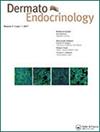COBRA N2 NA 疫苗可诱导针对流感病毒感染的保护性免疫反应。
IF 4.8
4区 医学
引用次数: 0
摘要
流感神经氨酸酶(NA)是一种具有广泛保护作用的疫苗的理想靶标。本研究采用计算优化广泛反应抗原(COBRA)方法开发N2 NA候选疫苗。利用1957年至2019年间分离的人流感和猪流感毒株的独特野生型(WT)N2序列设计了COBRA N2-A NA疫苗,而利用2000年至2019年间分离的人流感毒株的独特WT N2序列设计了COBRA N2-B NA疫苗。与接种WT N2 NA疫苗的小鼠血清相比,从接种COBRA N2 NA疫苗的小鼠血清中收集的针对H×N2流感病毒株的抗体反应更广泛。COBRA 或 WT N2 NA 抗原诱导的抗体与不同支系的近期人类 H3N2 流感病毒发生交叉反应,而 A/Switzerland/9715293/2013 血凝素(HA)诱导的抗体与同一支系的病毒发生反应。此外,与模拟接种小鼠相比,接种COBRA N2-B NA疫苗的小鼠在接受人类H3N2流感病毒挑战时,肺部病毒滴度较低。因此,COBRA N2 NA疫苗能针对多种亚型毒株激发广泛的保护性小鼠抗NA抗体,与模拟接种组相比,COBRA N2 NA疫苗组小鼠肺部的病毒载量显著降低,这表明基于COBRA的N2亚型NA疫苗有可能成为通用流感疫苗的组成部分。本文章由计算机程序翻译,如有差异,请以英文原文为准。
COBRA N2 NA vaccines induce protective immune responses against influenza viral infection.
Influenza neuraminidase (NA) is a promising target for a broadly protective vaccine. In this study, the Computationally Optimized Broadly Reactive Antigen (COBRA) methodology was used to develop N2 NA vaccine candidates. The unique wild type (WT) N2 sequences of human and swine influenza strains isolated between 1957 and 2019 were used to design the COBRA N2-A NA vaccine, while the unique WT N2 sequences of human influenza strains isolated between 2000 and 2019 were used to design the COBRA N2-B NA vaccine. Sera collected from COBRA N2 NA vaccinated mice showed more broadly reactive antibody responses against a broad panel of H×N2 influenza virus strains than sera collected from mice vaccinated with WT N2 NA vaccines. Antibodies elicited by COBRA or WT N2 NA antigens cross react with recent human H3N2 influenza viruses from different clades, while the antibodies elicited by A/Switzerland/9715293/2013 hemagglutinin (HA) reacted with viruses from the same clade. Furthermore, mice vaccinated with COBRA N2-B NA vaccine had lower viral lung titers compared to mock vaccinated mice when challenged with human H3N2 influenza viruses. Thus, the COBRA N2 NA vaccines elicit broadly protective murine anti-NA antibodies against multiple strains across subtypes and the viral loads were significantly decreased in the lungs of the mice in the COBRA N2 NA vaccine groups, compared to the mice in the mock vaccinated group, indicating that the COBRA-based N2 subtype NA vaccines have a potential to be a component in a universal influenza vaccine.
求助全文
通过发布文献求助,成功后即可免费获取论文全文。
去求助
来源期刊

Human Vaccines & Immunotherapeutics
BIOTECHNOLOGY & APPLIED MICROBIOLOGY-IMMUNOLOGY
自引率
8.30%
发文量
0
审稿时长
1 months
期刊介绍:
(formerly Human Vaccines; issn 1554-8619)
Vaccine research and development is extending its reach beyond the prevention of bacterial or viral diseases. There are experimental vaccines for immunotherapeutic purposes and for applications outside of infectious diseases, in diverse fields such as cancer, autoimmunity, allergy, Alzheimer’s and addiction. Many of these vaccines and immunotherapeutics should become available in the next two decades, with consequent benefit for human health. Continued advancement in this field will benefit from a forum that can (A) help to promote interest by keeping investigators updated, and (B) enable an exchange of ideas regarding the latest progress in the many topics pertaining to vaccines and immunotherapeutics.
Human Vaccines & Immunotherapeutics provides such a forum. It is published monthly in a format that is accessible to a wide international audience in the academic, industrial and public sectors.
 求助内容:
求助内容: 应助结果提醒方式:
应助结果提醒方式:


